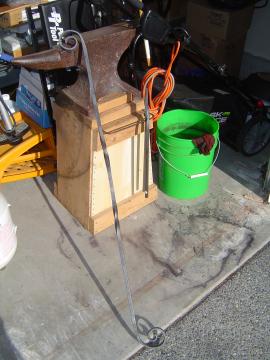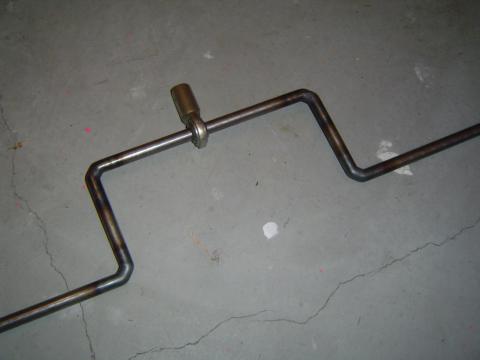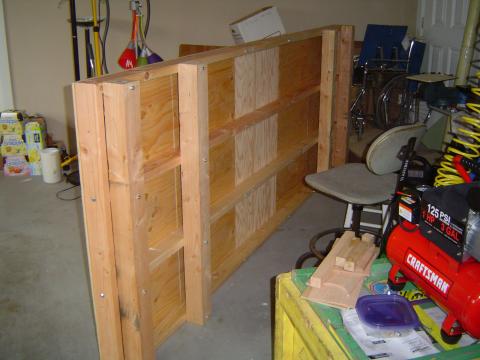
The drive train is completely mounted and trued. The shafts both turn quite nicely in their pillow block bearings, which only took a couple of hours of tweaking. The keyways still need to be cut, but everything else is done.

The forward crankshaft is mounted directly to the frame, but the rear differential shaft needed to sit lower so the chain drive to the rear wheels would clear the 4x4 members. I smithed these rough brackets out of cheap welding steel last week. One of them was a bit wonky, but luckily I only ended up using three of them!

The hole in the platform, allowing the pitman arm to run from the crankshaft to the pump arm. As you can see, the crankshaft itself is no longer quite square, due to some percussive adjustments, but the shaft itself is now. Slightly unpleasing aesthetically, but it's more important that it rotate freely on its bearings than it looks nice. The rod-end bearing will easily handle that small amount of misalignment.

The pump arm struts were also finished, at long last. Ended up taking 5 forge sessions. They still haven't been mounted -- the exact method of mounting has yet to determined -- but this test gives a pretty good idea of how it will work.
Huh, well, okay, maybe there has been quite a bit of work being done. :)








